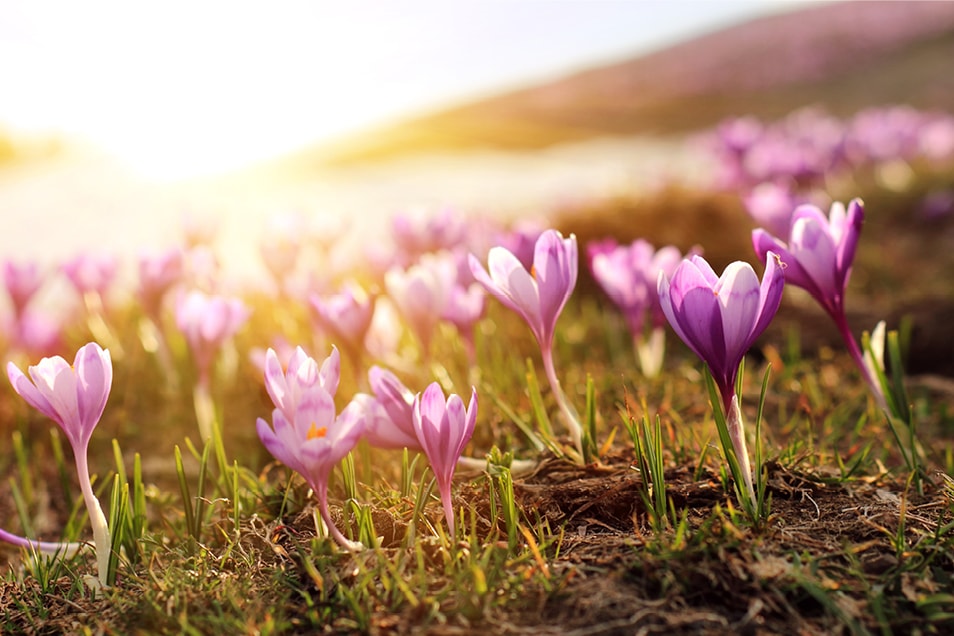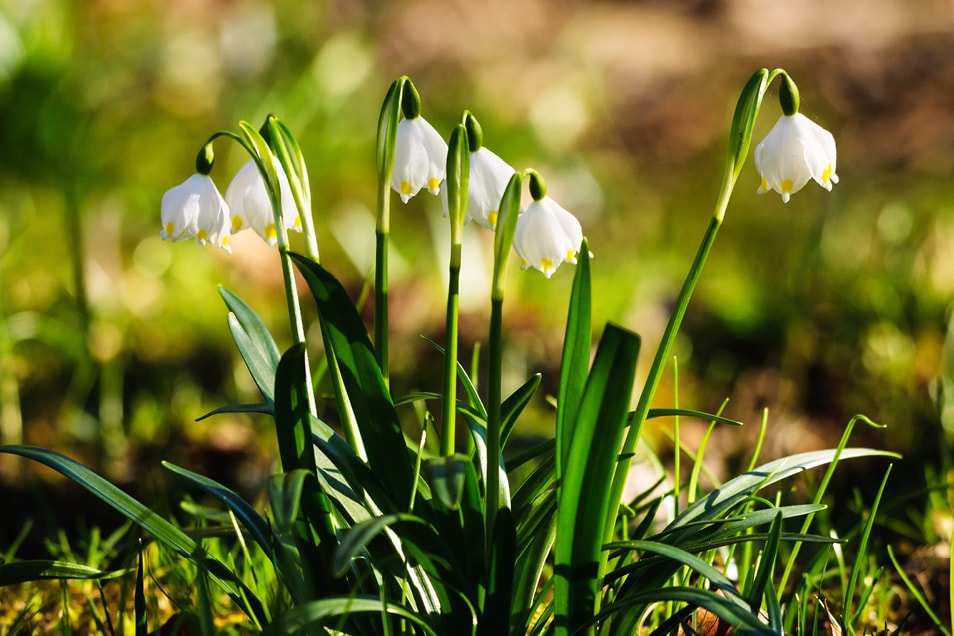Plants have an internal clock
The so-called circadian clock which many plants have detects sunlight and helps them recognise the time of year or day.

However, the decisive factor is not only whether it is light enough for a long period of time or dark enough for a short period of time, but also whether it is warm enough. Plants can gauge this with a kind of internal thermometer. The necessary messenger substances are only released to the buds to start flowering when both criteria are met. Conversely, this means that even if it gets warm early in the year, plants are not lulled into a false sense of security and wait for an additional signal to let them know that they have the necessary number of hours of daylight they need to bloom. This is how plants protect themselves against possible late frosts.

Not all plants need the same amount of
heat or light.
However, not all plants need the same amount of heat or light. Some flowers begin to bloom early in the year, others later in the summer or autumn.
There are long-day plants (LDP), short-day plants (SDP) and even day-neutral plants. LDPs and SDPs are governed by and dependent on periods of light and dark. Some long-day plants are oats, hibiscus and beech. Well-known short-day plants include poinsettias, violets and chrysanthemums. The length of daily light and dark phases does not matter to day-neutral plants.
These include the early flowering plants that herald the onset of springtime. Some of them flower as early as January and have some amazing special characteristics.
Early-flowering plants often blossom before the beginning of astronomical spring. Snowdrops, early spring cyclamens and crocuses provide splashes of colour in otherwise wintry landscapes.
They have bulbs or tubers that remain in the earth and serve as a kind of hibernation organ. These tubers store energy reserves that help the plants to sprout earlier than others and grow quickly during the last weeks of winter.

Crocus
These plants also have a high concentration of salt and sugar in their leaves – their own natural antifreeze. However, a closer look reveals that “snow holes” often appear around the stems of early-flowering plants. With the help of their bulb they produce bioheat of around 8-10 degrees. This melts the snow around the stems and leaves, and at the same time provides the water for irrigation of the plant.
With the power of nature, bulbous plants also provide valuable ingredients for our skin.
Crocus bulb extract, for example, can stimulate collagen and elastin production, counteract the ageing process and rejuvenate the skin texture. The specific molecules of crocus extract activate the skin’s own growth factors and promote its natural renewal process. As a result, the skin tissue becomes denser and the skin texture looks tauter.
Other messengers of spring that grow from bulbs are the Easter flowers that bloom from March / April, such as daffodils, hyacinths and tulips.
A special bulbous plant is the summer snowflake, but it only appears when winter temperatures are definitely a thing of the past. This impressive plant gathers all its strength in the bulb over the winter months. The summer snowflake can then welcome the spring in all its glory.

Summer snowflake
For our skin this plant is a really super-active ingredient, because it slows down the skin ageing process. Summer snowflake extract slows cell division to save energy and as a result also limits the formation of wrinkles. It virtually puts our skin into a state of rejuvenating hibernation, activates the body’s own production of free radical scavengers, alleviates skin stress and ensures an even skin tone.
Spring not only lifts our spirits and brings nature back to life, but our skin is gently awakened from hibernation and requires suitable skin care, which we will elaborate on in the second part of this series. Stay tuned!
Unique JUST products:



